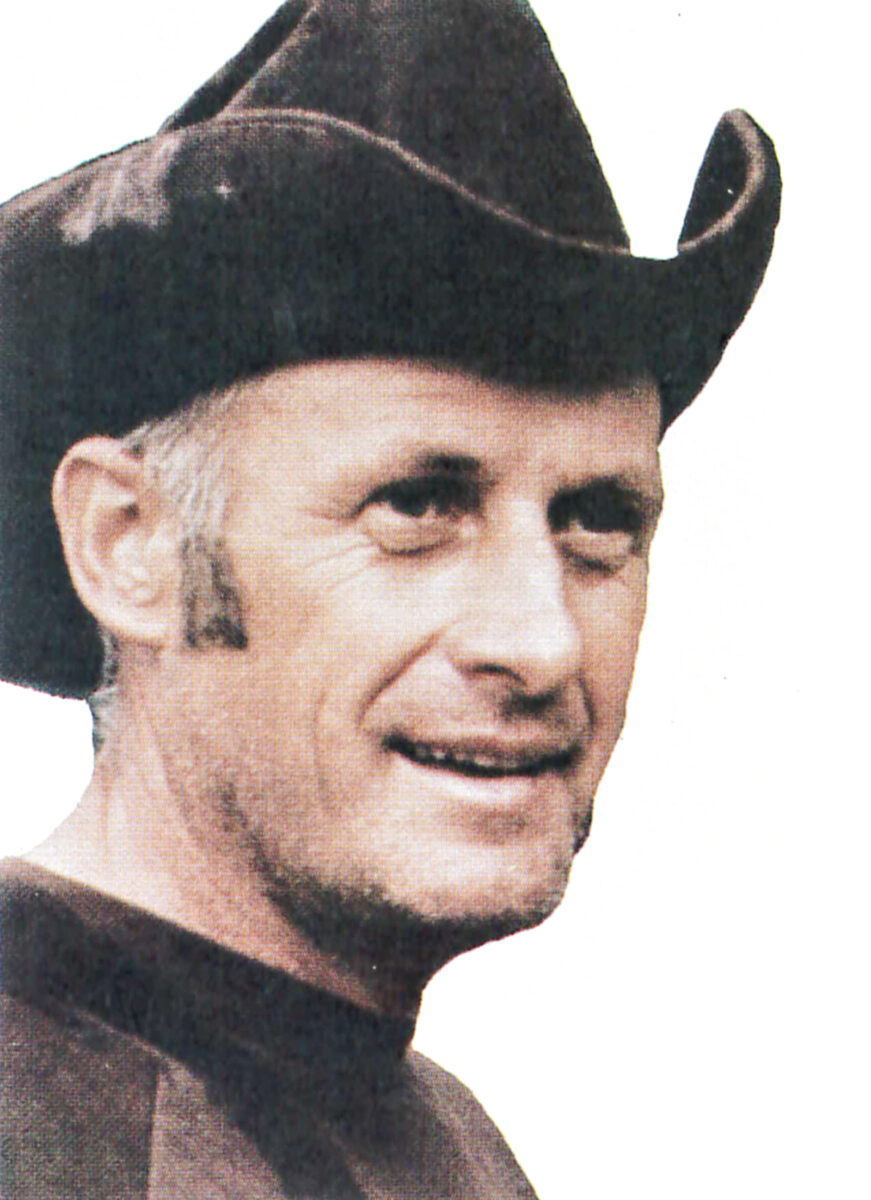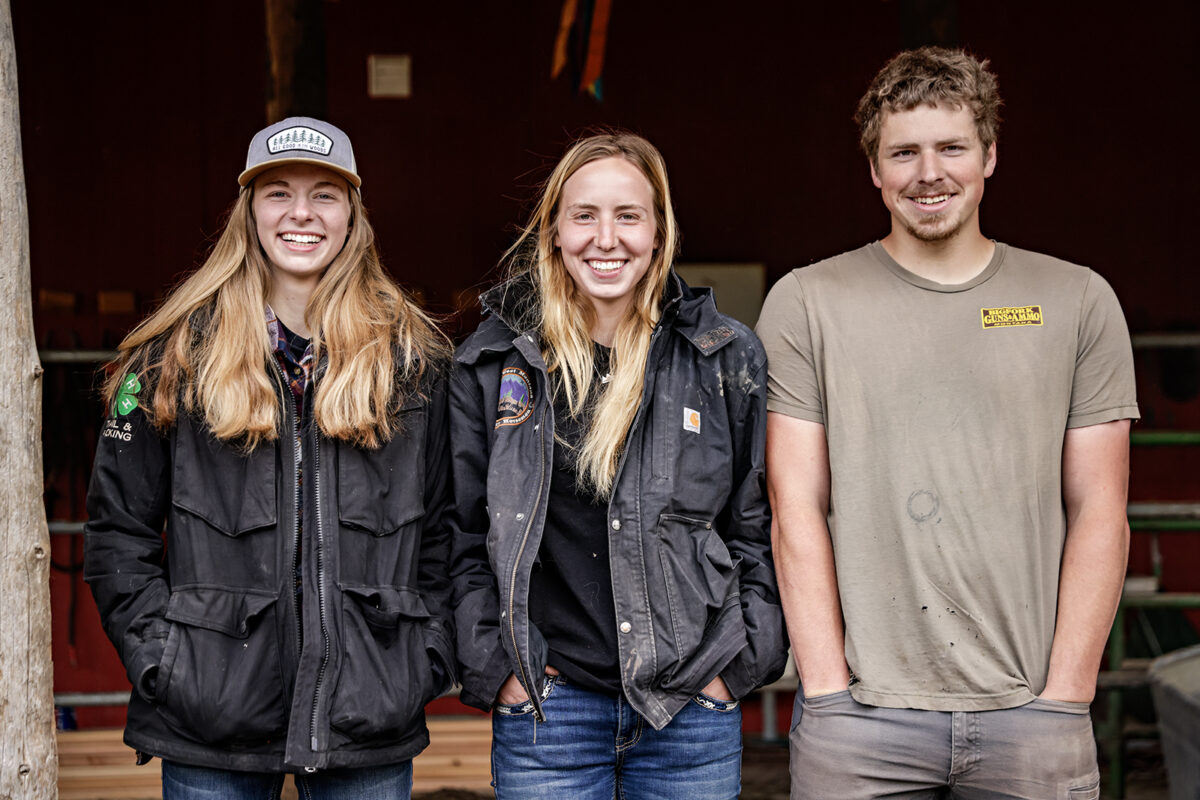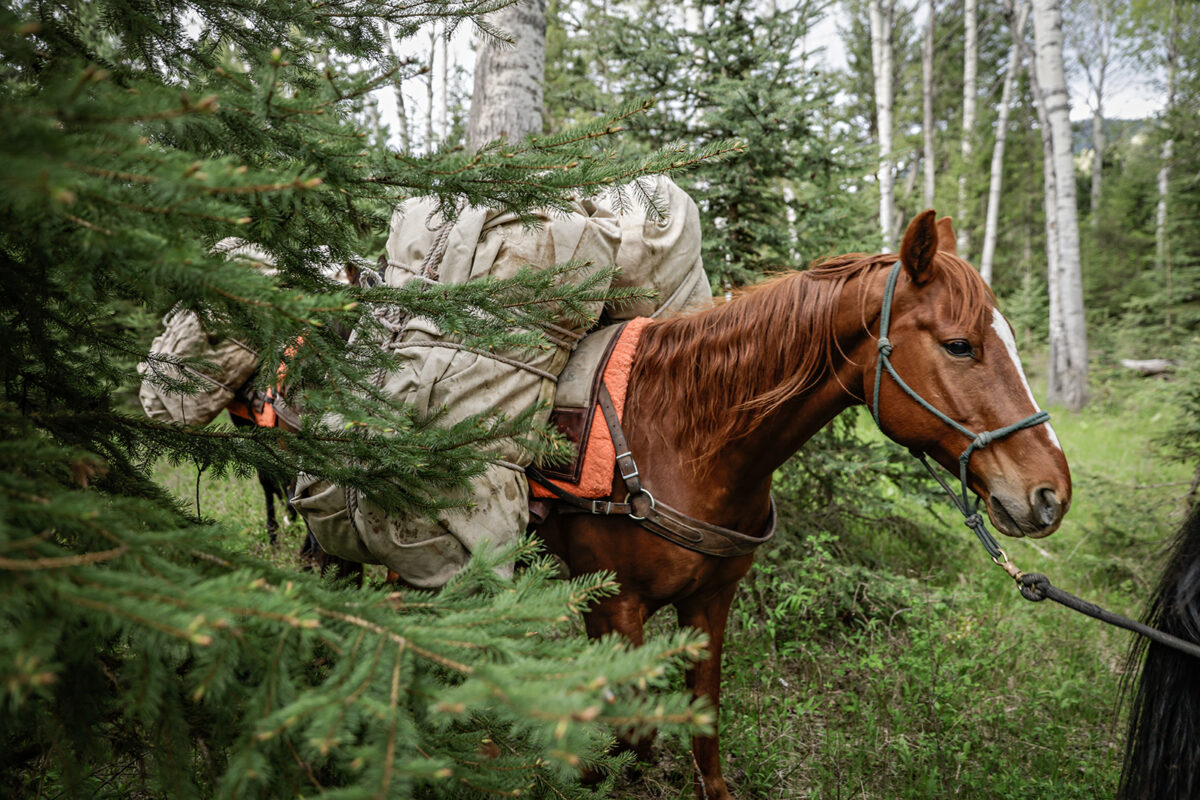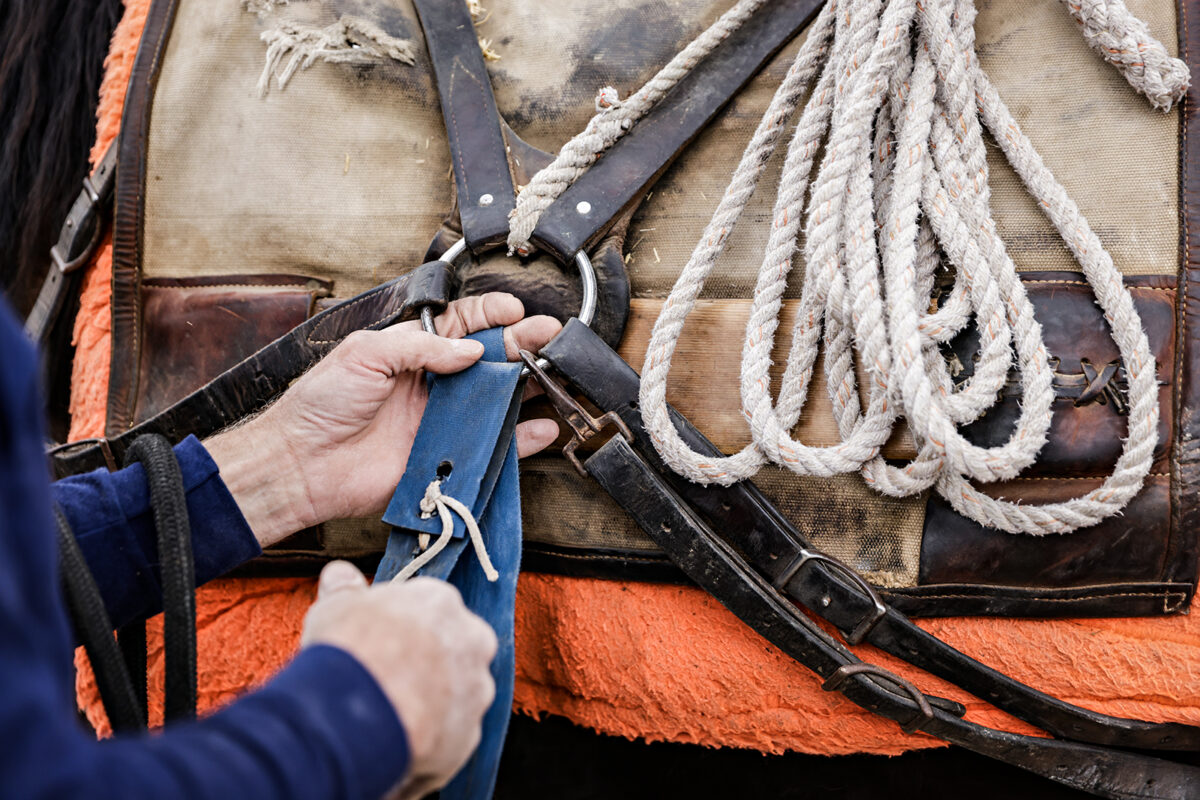A Legacy in Wilderness Packing
After the last founding member of the Back Country Horsemen of the Flathead died this year, the legacy of conservation and packing in the Bob Marshall Wilderness continues as horse packers reflect on the nonprofit’s vision and a new generation takes the reins
By Maggie Dresser
More than 50 years ago, four Columbia Falls men and their horses sat underneath the Wall Creek Cliffs at a hunting camp in the Bob Marshall Wilderness after learning their access to the remote region could soon be cut off. The U.S. Forest Service had recently announced a proposal that would require permits for all stock use in the wilderness area fondly known as “the Bob,” and infrastructure like cabins and bridges would be dismantled.
The four men — Ken Ausk, Dennis Swift, Dulane Fulton and Roland Cheek — were avid horsemen who were outraged at the proposal that would limit their experiences in the Bob Marshall.
It was at the hunting camp where they decided they would not tolerate the proposed policy, which they considered overreaching and unnecessary, and they unofficially formed a group dedicated to public land advocacy.
The newly formed Back Country Horsemen (BCH) of the Flathead had begun an outreach effort to educate the public about the Forest Service’s plan and, by January of 1973, they met in a gymnasium full of community members and government officials. The public hearing drew local news media outlets and afforded residents the opportunity to voice their opposition to the proposal.

As part of the policy, Forest Service officials planned to first remove the Salmon Forks Bridge, which served as a vital access to the South Fork of the Flathead River. Lacking the funds to repair the bridge, they said its removal was the only option.
After hearing widespread opposition to the plan, the Forest Service eventually agreed to let BCH members and volunteers help them haul materials 20 miles into Big Salmon Creek from the Meadow Creek trailhead to help build a new bridge. If the government agency didn’t have the resources, the BCH wanted to help.
“The Back Country Horsemen said, ‘OK, we’ll supply the horses and pack in all the materials in for you,’” Marcus Cheek, the son of Roland, said. “That fostered a better relationship with the Forest Service, and it also fostered an attitude that we’re not just here to cause problems — we’re here to solve problems.”
After the stock finished transporting 180 planks that measured 9 feet in length, as well as dozens of 90-pound bags of cement and a variety of other materials that amounted to an 18-wheeler’s supply load spread over two weekends, the Forest Service completed the bridge.
The bridge project served as a symbol for wilderness access while it also helped build the mission of the BCH, which became the first chapter in the nation. Half a century later, there are now dozens of chapters nationwide and thousands of members who partner with land management agencies to clear trails on public lands.
“That was the catalyst that started the movement,” Marcus said.
While the four founding members stayed active in the nonprofit organization to varying degrees over the years, the legacy of their advocacy has officially moved on to new generations after Roland Cheek, the last surviving founder, died on April 12, 2023. He was 88.
“His leadership is part of his legacy,” Marcus said. “He really believed in wilderness and that it needed to be protected.”


Roland met his wife, Jane, when she moved next door to him in seventh grade and when he was in ninth grade in Roseburg, Oregon. They got married just a few years later, in 1954, when they were still teenagers.
“I married the boy next door,” Jane said.
In 1964, the Cheeks moved to Columbia Falls with their two children after Roland’s employer, U.S. Plywood, transferred him to help expand the company to what would become Plum Creek Lumber and, eventually, Weyerhaeuser.
During Roland’s 12 years at Plum Creek, he met a rancher who introduced him to horse packing, taking him under his wing and mentoring the younger man. Back in Oregon, Roland had already established a passion for hunting and fishing, but horse packing was foreign to him until moving to the Flathead.
Roland bought a few horses and learned the lay of the land in the Bob Marshall Wilderness; after taking his first client, who was a timber industry professional from Portland, into the Bob, he eventually transitioned to outfitting fulltime.
By 1971, Roland launched Skyline Outfit. He had 30 horses and customers who hailed from California and Texas, and his guides frequently used the Salmon Forks bridge to access some of the most remote areas of the roughly one million acres of the Bob that abuts the Great Bear and Scapegoat wildernesses.
When Roland first heard that the Forest Service had plans to remove the bridge and require permits for stock, it launched his advocacy for public land access. The proposed policy would not only block off access to the land he explored with his friends and family, but it would also hurt his livelihood.
“He was a strong believer in rights and when the Forest Service started dictating where we could camp and how much we had to pay, he just kind of got a kick that somebody needed to get the Forest Service to give back to the public,” Jane said.
While the BCH was never tasked with another project of that magnitude, the nonprofit continues to partner with land management agencies where volunteers clear hundreds of trails in the Bob, Glacier National Park and the Hungry Horse and Spotted Bear ranger districts every year.


Over Memorial Day weekend of this year, Keni Hopkins, the daughter of founding member Ken Ausk, was helping organize a crew of packers at Meadow Creek trailhead for a clearing project — the same location where the Salmon Forks Bridge project was staged more than 50 years before.
Hopkins was in high school when the BCH was launched and she was tasked with typing the Back Country Horsemen’s Guidebook, a free, 60-page “shirt pocket” guide designed to help wilderness travelers be light on the land.
Hopkins grew up down the street from the Cheeks and, after a 20-year hiatus in Alaska, she returned to the Flathead in 1998 and jumped back into various roles on the BCH board, ranging from treasurer to vice president while her husband, Ralph, ascended the ranks to his current position as president.
This year, there are 102 BCH members with 15 active members, and Hopkins says membership stays somewhat steady each year. There were many years when Hopkins was the only woman on the board, but she says more women are joining.

“I feel really grateful — even when we first moved back, a lot of members were men,” Hopkins said. “Now we have more couples and when we go on a project, everybody has their role to play, and I really appreciate that we have more women now.”
But Hopkins always remembers Jane playing a vital role in every outing into the Bob, with her meticulous meal planning and logistical coordinator.
“The women were equally involved,” Jane said. “The men have to be fed and you’ve got to get all the equipment to the staging area … It was a social thing and most of the correspondents have been women.”
In 2015, Rick Mathies spearheaded the formation of the NorthWest Montana Back Country Horsemen chapter, which is also based in the Flathead Valley.
While the two chapters share the same vision of trail conservation and advocacy, the NorthWest chapter is geared toward youth and families, as well as partnering with the 4-H Trail and Packing program. About 20 to 30 kids ages 8 to 18 sign up each year.
Seline Totten got involved in the NorthWest chapter when it launched in 2015 with her father, Alden, and her two older siblings, Patrick and Melanie.

“We went to all of the 4-H clinics and learned how to make the loads, tie up a horse — all the cool stuff,” Seline said.
Seline remembers her first overnight trip at age 10 when she rode into Castle Lake in the Bob Marshall Wilderness. They rode 10 miles up an old growth timber forest over steep terrain before the landscape opened to a hanging valley blanketed with wildflowers.
Now 18, Seline teaches the 4-H clinics and helps with pack support and trail clearing for the Bob Marshall Wilderness Foundation.
Melanie, too, immersed herself into packing and became the NorthWest chapter’s president last year at age 20. As far as anyone on the board is aware, she is the youngest Back Country Horsemen board president ever elected nationwide.
In addition to running the board meetings, planning trip logistics and the constant communication required to ensure tasks get done, Melanie says one of the biggest challenges is recruiting new members.
Alden, who grew up in Eureka, says the time-consuming logistics, changing demographics and prohibitive cost of owning horses contributes to the recruitment challenges.
“There’s not as many people with horses and property as there used to be,” Alden said. “Growing up — everyone lived on a ranch or a farm with horses. They don’t anymore.”
But for Melanie, the passion for packing that her father instilled in her a decade ago continues to run deep and she takes pride in her role with the NorthWest chapter.
“It’s a lot of fun to work with the horses — it’s a lot of fun meeting people who pack for the Bob,” Melanie said. “People are always shocked when they see us riding in because they’re always expecting older men and instead, they see two blonde girls riding in.”